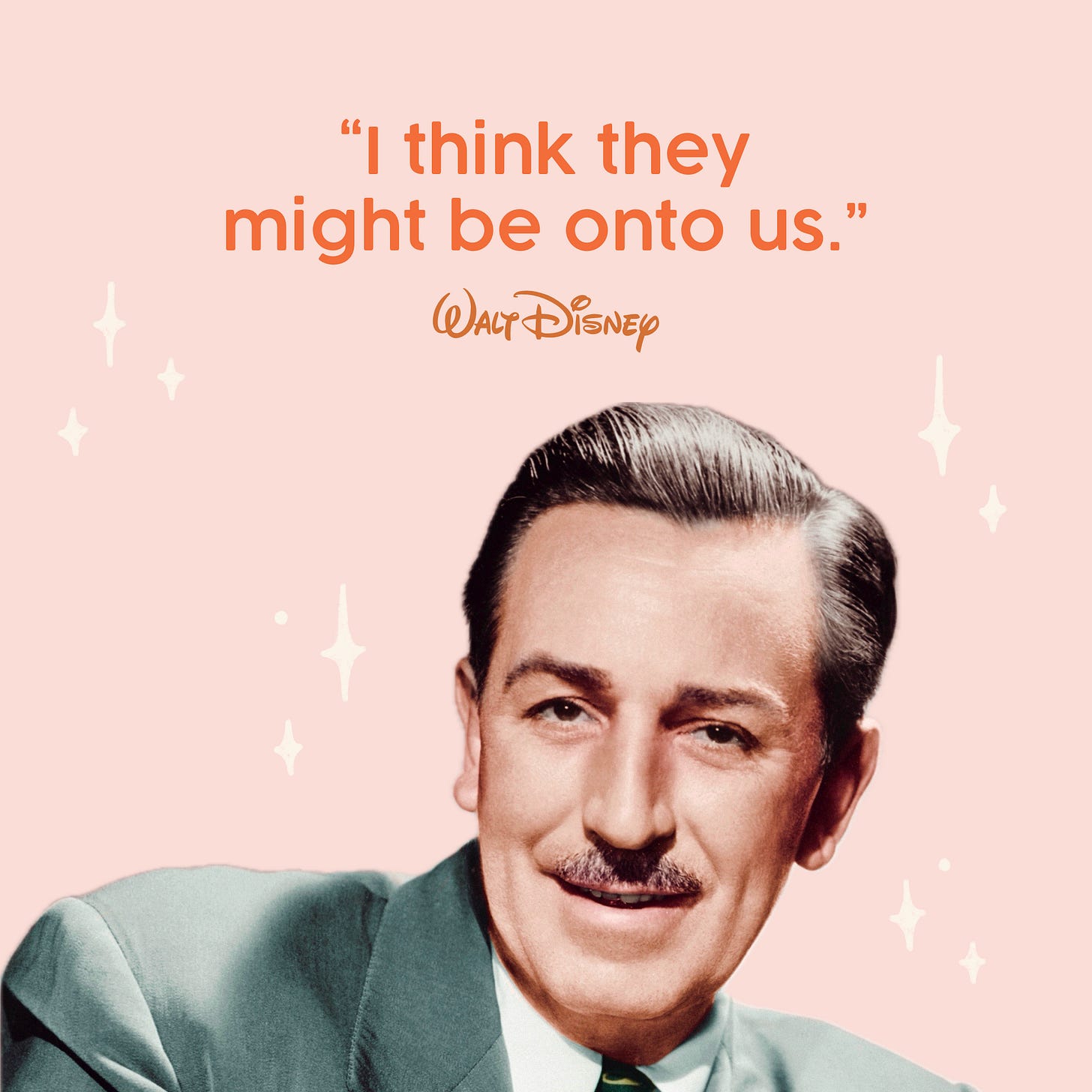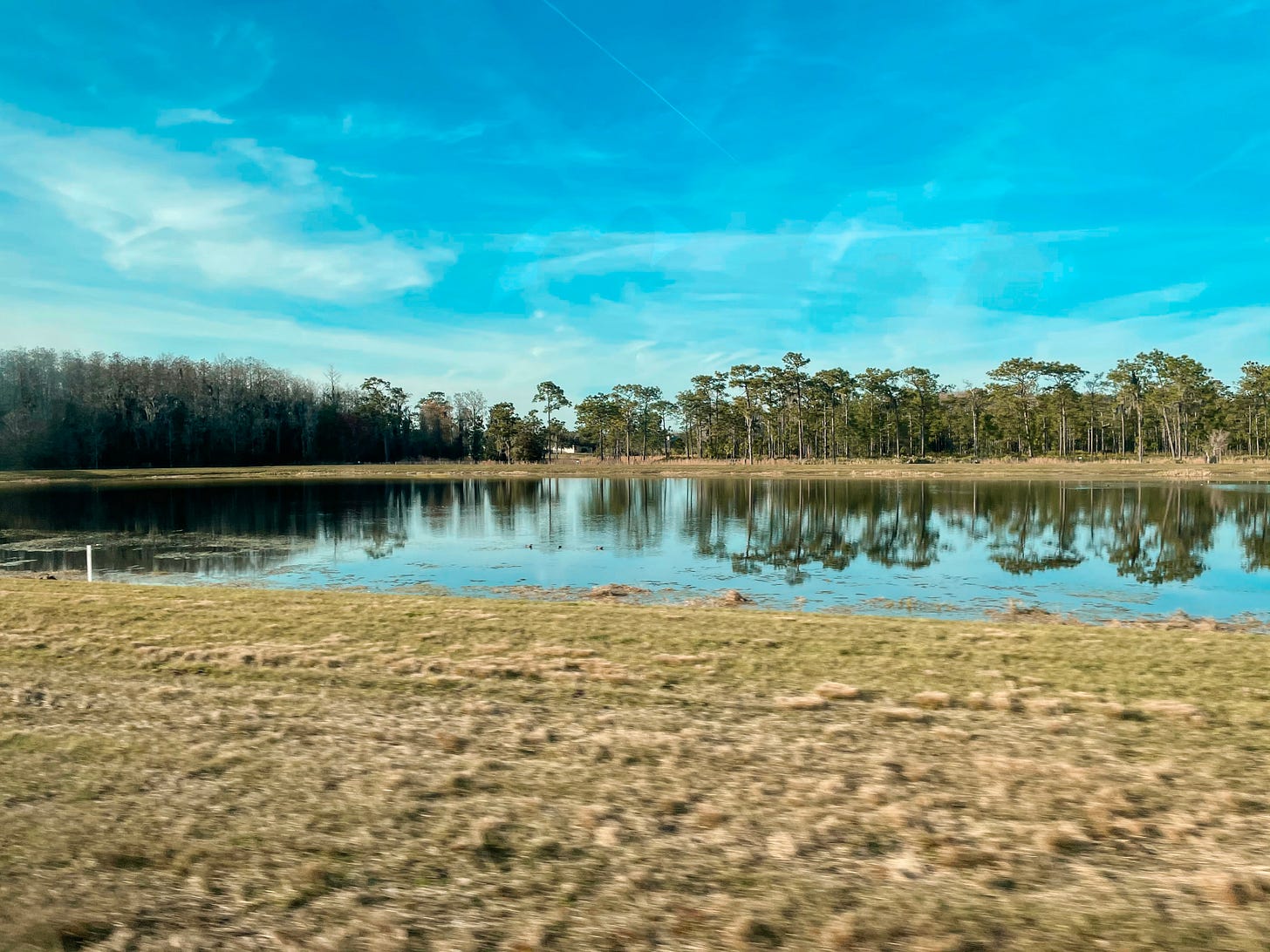The Rumor That Ran the Mill, pt. 1
How some lil' rumblings changed the tide for Project X in May 1965

It’s spring 1965, and Disneyland is gearing up for it’s “Tencennial Celebration” that’ll take place in a few short months. The 1964 film Mary Poppins just won four Academy Awards (after securing a whoppin’ 13 nominations), and two new live-action films, The Monkey’s Uncle and That Darn Cat!, are on the docket for release later in the year. Four now-classic Disney Parks attractions — the Carousel of Progress, Ford Magic Skyway, “it’s a small world”, and Great Moments with Mr. Lincoln — just kicked off their second six-month stint at the 1964-1965 New York World’s Fair, and plans for an updated Tomorrowland are stacked on Walt’s desk. Ah, what a time.
From the outside, it might have appeared that things were simply business-as-usual for the Walt Disney Company. Almost six decades later, we know that couldn’t be further from the truth.
By late May 1965, Disney officials had already secured — by means of actual title or agreement options — over 25,000 acres of Central Florida property that was comprised of swamps, grazing cattle, and citrus groves. Up until this point, any public speculation or news regarding the collection of land acquisitions for an East Coast Disneyland were fairly low key. Sure, there were certainly curious rumblings throughout the state and local communities but since the purchases were made through various regional-based “dummy” corporations (i.e. Reedy Creek Ranch, Inc., Bay Lake Properties, Inc., Tomahawk Properties, etc.), any guesses as to who was moving into Orlando were as good as the next.
That all changed, however, on May 20th, 1965 in a front-page article of the Orlando Sentinel that loosely suggested Walt Disney as the possible buyer.
“There has been one consistent rumor that the land is being purchased for a second East Coast Disneyland attraction, but little credence is given this in view of the fact that Walt Disney himself, in a recent statement to The Orlando Sentinel while on a visit to Cape Kennedy, said he was spending $50 million to expand his California attraction and had neither the time nor the talent to look for a second venture. In short, Mr. Disney said he already had his hands full.”
Mhmm — sure.
Although the Orlando Sentinel made their uncertainty about the mystery buyer perfectly clear, Disney officials knew that they had to act and act quickly to secure ownership of any remaining properties to avoid the possibility of astronomical price-hikes by land speculators.
But to understand how Walt and his trusted corporate comrades made it this far without blowing their cover, let’s rewind a bit.
Enter: Project X
(For the sake of the word count, I want to keep this concise because there’s truly so much to talk about as this is a fascinating chapter of Disney history. With that said, I will be revisiting this topic in the future…multiple times. Let’s proceed!)
In the early days of Disneyland, it became painfully apparent to Walt that the rapid development and encroachment of Anaheim was dampening the guest experience as he envisioned it. The first Disney park was a resounding success with a well of potential still to be tapped, but Walt knew that he could, 1.) create a theme park that dodged the issues that continued to plague Disneyland and 2.) cater to a market that was chomping at the bit to get a lil’ taste of the magic, the eastern seaboard.
The search for a site originally focused on spots in Missouri, New Jersey, and New York but after an assortment of logistical and financial hurdles, the locations were scrapped for alternatives that offered comfortable weather and would cater to year-round park guests. Walt reviewed options in Alabama, Georgia, and South Carolina, but his strongest interest was in — can you guess it? — Florida.
With sights set on the Sunshine State, Disney officials were then tasked with choosing a location for the development. The coastal city of Palm Beach led Walt to pursue the idea of a “Community of Tomorrow” (later known as the Experimental Prototype Community of Tomorrow, or EPCOT), which not only included a four-hundred-acre theme park but also a town center for seventy thousand people.
Ultimately, budget disagreements and contrasting personalities of Roy Disney and a local, billionaire landowner got in the way of negotiations on the southeast Florida coast, so the search continued north to Ocala. While a private report suggested that the city would be the prime spot for a Florida development, it didn’t consider the construction of two major intersecting highways near Orlando (drive-by visibility!) or the percentage of large, single-owner land holdings in southwestern Orlando and that, my friends, is what ultimately put the “x” on the map for Walt and his team.
By early 1962, rumors were already quietly surfacing throughout the Florida business and government sectors but Disney officials (known as the “select seven” and included Joe Fowler, Donn Tatum, Bob Foster, Jack Sayers, Larry Tyron, Mel Melton, and Esmond Cardon “Card” Walker, with Harrison “Buzz” Price joining shortly after) didn’t start making any moves on what was referred to as “Project X” until November 1963 when they embarked on a property scouting tour of Central Florida.

Now, keep in mind that Walt and the team were keeping a low, if not an entirely anonymous, profile. They flew in unmarked, small aircraft and traveled through different cities under various pseudonyms. Walt ditched his highly recognizable name for William Brown and even though some folks recognized him as Walt during his travels, he still signed the name William Brown when they asked for his autograph.
Between late 1963 and early 1964, Disney officials worked closely with their group of trusted experts (i.e. lawyers, local real estate pundits, and researchers) to select and investigate specific properties around Central Florida that would be large enough for the project. Some sites along the Atlantic coast caught their attention, but a 12,440-acre property known as the Demetree Tract ultimately lured them back to the Orlando area for it’s close proximity to the new I-4 and Florida Turnpike.
By spring 1964, the team had narrowed their search to multiple parcels in southwest Orlando. To balance their interests and get ahead of the land-grab curve while still maintaining secrecy, Disney officials decided to use option agreements to acquire the legal rights of purchasing a property at an established price within a certain timeframe.1 This allowed for greater flexibility and was cheaper than buying a property upfront.
This method was used to acquire the legal rights to later purchase the properties that comprise a vast majority of the Walt Disney World Resort that we know today, including the Demetree Tract, the Bay Lake Tract, the Hamrick Tract, the Munger Subdivision, and the Goldstein Property. Only one large parcel of land, the Bronson Parcel, was purchased outright by Disney officials on May 3rd, 1965 through a dummy company called the Latin American Development and Management Corporation.2
With the key land parcels under option agreements for the time being, Walt and his team began tinkering away at initial concepts and plans for the Florida project back at their home base in California. The printing of the Orlando Sentinel’s article from May 20th, 1965 certainly raised brows and fueled conversations had across both boardroom and dinner tables, but it wasn’t until a couple weeks later when a gossip columnist from the same newspaper published their own well-sourced speculation on who could be tip-toeing around Central Florida that things really, really kicked things into gear.
Ah, a cliffhanger! Just like Central Orlando folks some 60 years ago, you’ll have to wait a couple weeks to hear how this story progressed for Disney officials and ultimately led to the creation of one of the world’s most unique and beloved theme park and vacation destination. That’s magic, noted.
See ya real soon,
👋🏻 Lookin’ for more magic? Come say “hi” on Instagram!
☕ Help fuel those early mornings and late nights by buying me a coffee
💬 Found something in this post that resonated with you? Highlight and share it as a note to your Substack feed!
💌 Spread the magic by sending this post to a fellow Disney nerd
🗣️ Got a Substack of your own? Recommend Magic, Noted to your readers!
Aside from securing option agreements and purchasing properties (which included their surface rights), one major hurdle that Disney officials had to clear was obtaining the underground rights, which was an entirely different battle. In the case of the Demetree Tract, they underwent lengthy negotiations with the then-owners, Tufts College, in a Boston conference room to ultimately acquire the underground mineral rights in July 1964.
The Bronson Parcel was owned by Florida State Senator Irlo Bronson, who also owned the Demetree Tract before it was sold to the family who ultimately passed it off to Disney.











